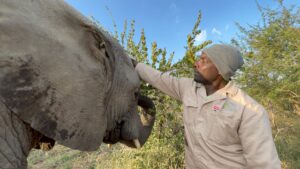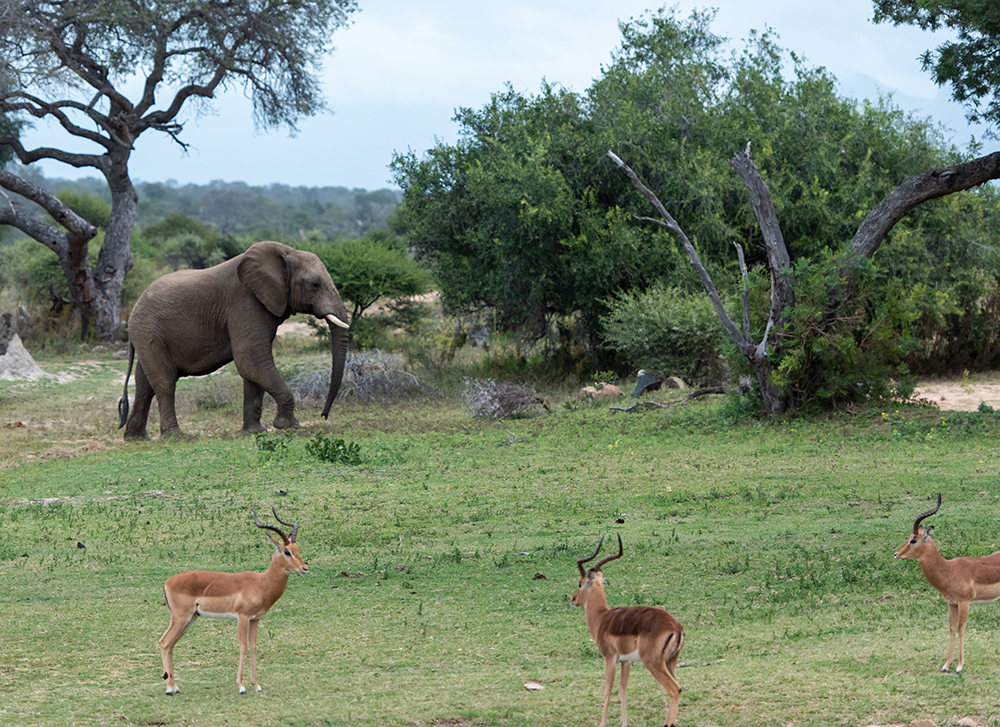Today’s bush lessons with the elephants comes from Senior Elephant Carer, Owen! Watch as we spend time with Khanyisa, Timisa and the allomothers: Kumbura and Tokwe, with a visit from Fishan.
Hi, welcome, my name is Owen. Looking to a cow elephant, there are some features that are easy for you to pick up quickly to be able to tell a female from a male. Looking at the forehead, the female has an angle to the forehead whereas the male has a rounded forehead. With the tusks, the female’s tusks are very thing and more pointed forwards than the male, the male tusks, if they are starting to come out, they split or point outwards more to the side. You can find males who have tusks that are a little bit similar to the tusks of a female, but the difference is how they come out at the base, with males’ tusks pointing outwards. If you look at the frame of the female, the tusks where they come out from the chambers, the space between the female’s tusks are more narrow, whereas the male’s spacing is wider.

Also the tusks of the male look more thick than the tusks of the female. So this is the difference between males and females. But you can find a female you doesn’t have tusks and then you can look at the forehead. You can see the point on the forehead of a female. The male doesn’t have this, it is more rounded. So you can use this to pick up the gender quite quickly.

I also want to show you the difference between the urine of a male and a female when you see out in the bush the dung and urine together or side by side. In the bush if you see the dung is to one side and and the urine one the other side, you can see where the urine started to hit the ground, there is a gap, so this is the urine and dung of the female. With cows, when urinating, there will be a gap between where the dung drops and the urine falls.

For the male, the dung drops and where the urine comes out of the organs of the male, the organ stretches backwards and the urine falls on the dung, not away from the dung. For the male, you can see that then the dung looks like it’s been washed. Like someone was pouring the water on the dung. Because the males urinate on the dung. That’s how you tell the difference between the males and the females. Watch the video for more insights into sneezing and sand baths, with close ups of Khanyisa enjoying her time beside Kumbura!




 Comment
Comment






